MusicRadar Verdict
The most historically accurate Gibson Les Paul '59 Reissue to date. Wallet-worryingly desirable and it sounds fantastic too.
Pros
- +
New pickups and fingerboard. Improved cosmetics.
Cons
- -
Pickup covers (still) don't match vintage spec.
MusicRadar's got your back
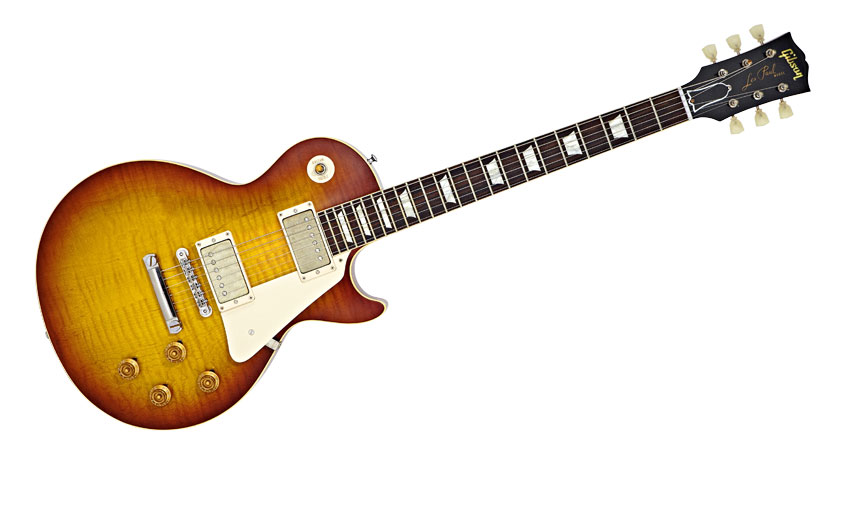
Gibson Custom 1959 Les Paul Standard Reissue
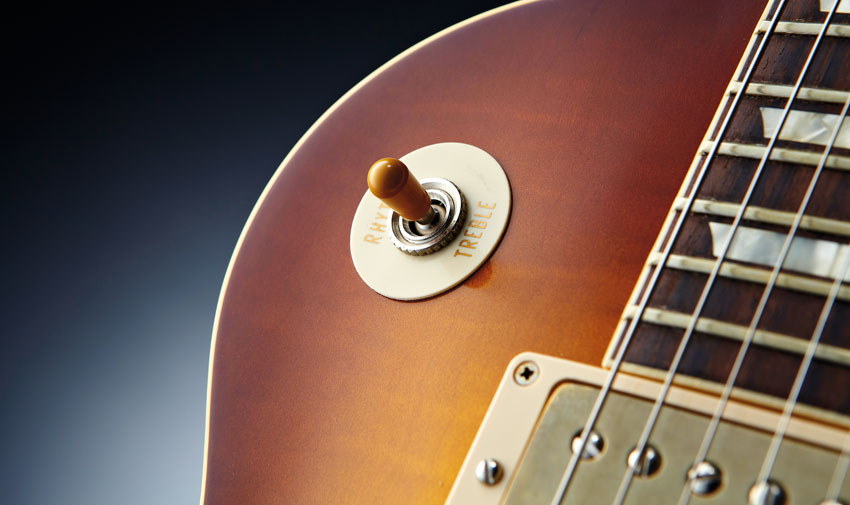
Pickup selector
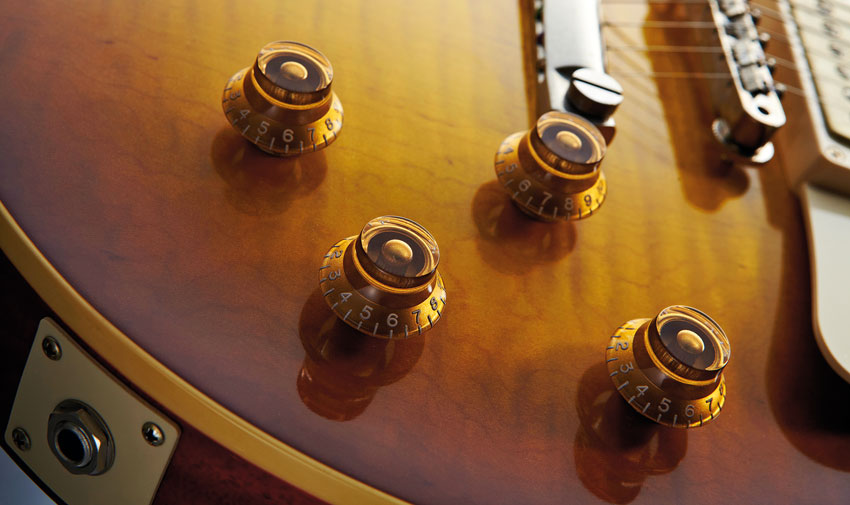
Controls
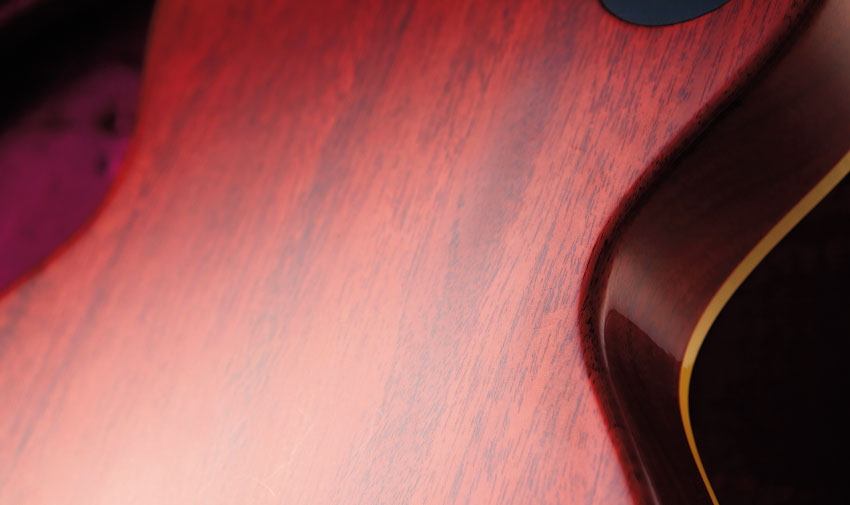
Rear
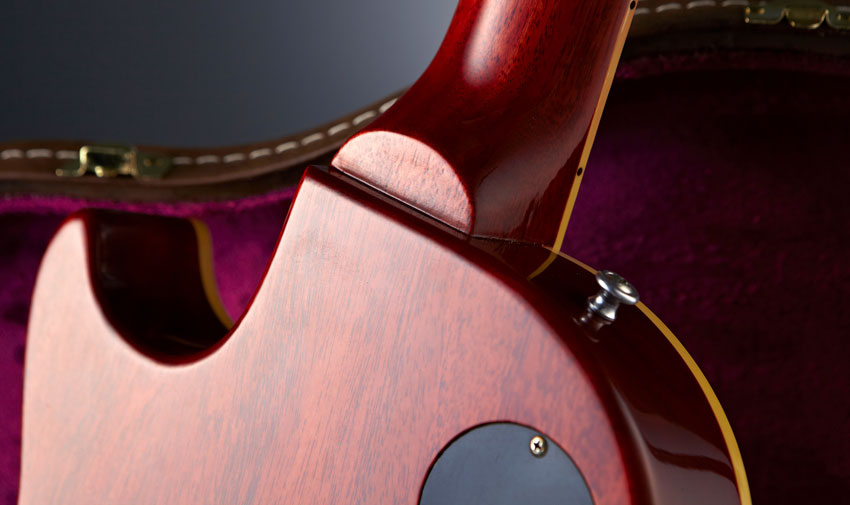
Neck joint
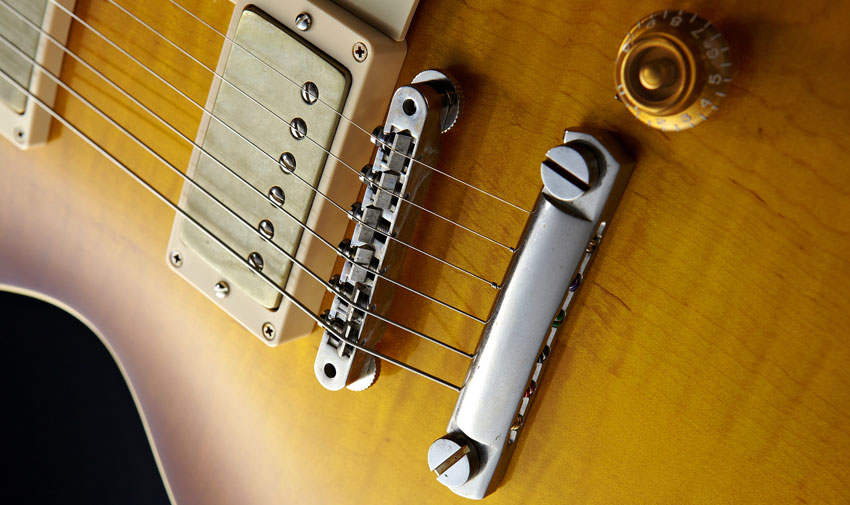
Bridge
Silence. That was the reaction in the office when the lid was flipped on the latest R9's case. Just look at it: if you've ever watched or listened to Jimmy Page, Paul Kossoff, Eric Clapton, Peter Green or Billy Gibbons with misty eyes - or any of the other 'Burst-toting guitar gods in their prime - this guitar will stir something deep inside you.
The Gibson Custom 'reissue' Historic program was officially launched 20 years ago, in 1993, as the then-latest step in a long and difficult rebirthing of the 'classic' single-cutaway Les Paul model. Since then, the Custom division has been refining its Historics with periodic updates, all the time re-learning more about those 1,500-ish original 1958 to 1960 'Bursts that are central to the story of rock music as we know it.
"2013's updates are, to some people, essential tweaks; to others, splitting hairs to an unnecessary degree"
2013's updates are, to some people, essential tweaks; to others, splitting hairs to an unnecessary degree. Either way, the most visually obvious change is the fabulous pinkish-cherry hue to the backs and necks of the new guitars. Gibson is using aniline dyes on the back and neck, which contributes to this authentic look, although not on the tops.
The stuff is UV-sensitive, so when used on guitar tops (even under a nitrocellulose top coat) can fade significantly as you can see if you look at pictures of old 'Bursts. As a matter of interest, Gibson stopped using aniline dyes on Les Paul tops in late 1960, which is why those guitars often look much more red, and are far less faded. We've seen plenty of very faded R9s too, it should be said.
One of aniline dye's other downsides was that it contributes to colour bleed into the binding, turning it pinky red. Again, we've seen some pre-2007 R9s with binding bleed, after which it seemed to get better, but our review guitar has already gone quite pink down the top edge of the neck binding after a couple of months' worth of gigs. It will fade in time - over years - just like the old ones.
Other changes include a one-piece rosewood fingerboard, a 'new' feature that will have many 2012 R9 customers' blood boiling at this point. Gibson was lambasted for using a two-piece laminate for some Historic fingerboards, a decision held up as a potential benefit to stability at the time. But it was woefully unpopular in hearts and minds, so we're back to one-piece boards for the 2013 R9.
"The new pickups are called Gibson 'Custom Bucker': think Burstbuckers, but with Alnico III magnets"
We also have a tweaked truss rod: this one does not feature a plastic sleeve, which is a common mod done during third-party vintage Les Paul makeovers. There's an argument to say the guitar sounds more authentic without it: somewhat contentious, perhaps. The new pickups are called Gibson 'Custom Bucker'; they're the latest evolutions for Gibson's most historically accurate PAF-style pickup: think Burstbuckers, but with Alnico III magnets.
Want all the hottest music and gear news, reviews, deals, features and more, direct to your inbox? Sign up here.
It's probably worth pointing out for the record that all the '59-type spec you'd expect is here too; a lightweight, non- chambered, non-weight- relieved body; long-tenon neck join (now done with hot hide glue, which is a big deal for vintage LP fans) and a 17-degree peghead with proper holly veneer.
Modern Bumblebee caps, 500k pots, vintage-style lightweight nickel tailpiece and bridge with no retaining wire... It's all exactly as it 'should' be but for one consistently maddening detail: the radius on the pickup covers' edges is too big (compared to original PAFs), as it has been for years on new Gibson pickups.
Sounds
"We ordered two in to compare them, and the sheer balance, clarity and tonal richness of both guitars is equally palpable"
Anyone who thinks Les Pauls are all thickness, no subtlety, needs to play one of these. We ordered two in to compare them, and the sheer balance, clarity and tonal richness of both guitars is equally palpable.
The tones clean up beautifully when you wind the volume pots down, and there's none of that lower-midrange dominance that (to many players) makes 1990s and 2000s Standards such sonic sledgehammers.
It's also a misconception that all the old necks were huge: they weren't. This one feels fantastic to these hands; with a little bit of meat removed from the shoulders it's nowhere near as clubby as some, but plenty substantial enough to get hold of and sound great. They're all going to vary a bit, so you'll need to try some.
You might find the neck pickup a tiny bit out of balance with the bridge; it's not calibrated to be weaker as most modern humbucker sets are, but it's in no way a 'problem' or criticism. That magical vintage- style Les Paul voice is there in spades, with enough treble brilliance to make it cut though, enough plummy bass to sound rich and fat yet crystal clear and, of course, that all-important vocal midrange that makes the myriad both-pickups-on options so eminently usable.
Through a cranked Marshall Plexi-style amp, it is the sound of classic rock, but the guitar's remarkable poise also makes it a delight to play through classic Fender-style amps, if your preference is for a higher-headroom, cleaner blues approach to things.
"We should also mention how well the guitar plays: Gibson's quality control and setups have been markedly better of late"
In short, put on any classic recording that features a vintage 'Burst: this guitar is that sound (with the right player, of course!). We should also mention how well the guitar plays: Gibson's quality control and setups have been markedly better of late, not that you should expect anything less from a guitar of this price.
If you have a penchant for vintage-style Les Pauls, it's hard not to fall in love with this guitar. Not only does it sound and feel exceptional, it also offers you a money-can't-buy feeling of ownership. Yes, we've seen guitars that are more precision-made, and yes, we've played many more that offer better value for money when viewed purely objectively. Unless you've been living under a stone on Mars, however, this guitar's musical history and legacy makes strictly objective appraisal about as difficult as it is purely academic.
Does it feel like a real '59? It probably will after about 40 years of playing. Is it the best R9 yet? Yep - the new pickups, new fingerboard and improved cosmetics are all very welcome appointments.
With a wallet-crippling sigh, we have to concede that 2013's 1959 Reissue is maddeningly, pant-wettingly want-worthy: it's a yes from us.